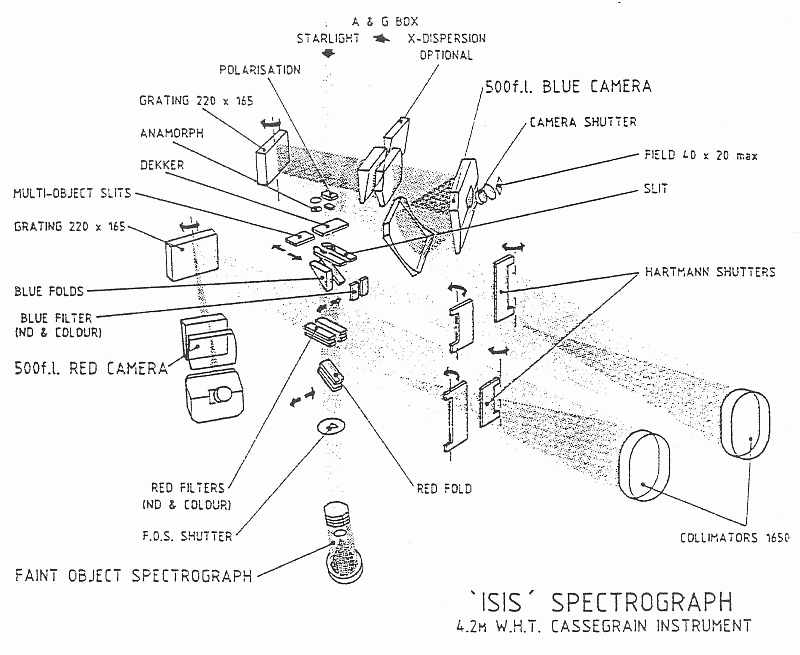



Next: Polarisation optics
Up: ISIS
Previous: ISIS
ISIS and FOS-2 comprise three spectrographs sharing a common slit unit,
dekker slide,
optics for spectropolarimetry, and some filter slides. FOS-2 lies
directly below the optical path, and is designed to provide the highest
throughput at a dispersion of 400 Å/mm in first order, and 200 Å/mm
in second order. Each of the two arms of ISIS is a conventional spectrograph,
with interchangeable reflection gratings, and a horizontal optical layout.
The optical components of the two arms, and the anti-reflection coatings
on those components, are optimised for specific wavelength ranges. The
upper arm is optimised for the range 3000 - 6000 Å, and is called the
BLUE arm, whilst the lower arm is optimised for the range 5000 - 10000
Å, and is called the RED arm. Light is fed into the two arms of
ISIS by 45 folding mirrors or prisms on the optical axis of
the telescope and at the levels of the respective collimators. The folding
mirror for the blue arm can be replaced by one of a range of dichroic
filters, which reflects blue light and transmits red light, allowing
simultaneous use of the blue arm of ISIS with either the red arm or
FOS-2.
folding mirrors or prisms on the optical axis of
the telescope and at the levels of the respective collimators. The folding
mirror for the blue arm can be replaced by one of a range of dichroic
filters, which reflects blue light and transmits red light, allowing
simultaneous use of the blue arm of ISIS with either the red arm or
FOS-2.

[ TIFF ]
Figure: Exploded
view of the optical components of ISIS and FOS-2, showing
the light paths through the components.
Tue Aug 15 16:42:46 BST 1995
 folding mirrors or prisms on the optical axis of
the telescope and at the levels of the respective collimators. The folding
mirror for the blue arm can be replaced by one of a range of dichroic
filters, which reflects blue light and transmits red light, allowing
simultaneous use of the blue arm of ISIS with either the red arm or
FOS-2.
folding mirrors or prisms on the optical axis of
the telescope and at the levels of the respective collimators. The folding
mirror for the blue arm can be replaced by one of a range of dichroic
filters, which reflects blue light and transmits red light, allowing
simultaneous use of the blue arm of ISIS with either the red arm or
FOS-2.




